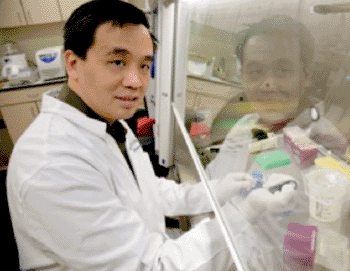Genome of the Lone Star Virus Quickly Unmasked by Ultradeep Gene Sequencing
By LabMedica International staff writers
Posted on 14 May 2013
Virologist have used next generation "ultradeep" gene sequencing and analysis coupled with de novo synthesis of the viral genome to assign a unique example of the Lone Star virus (LSV) to the bunyavirus family of tick-borne viruses, which includes several human pathogens.Posted on 14 May 2013
Depth in DNA sequencing refers to the number of times a nucleotide is read during the sequencing process. Deep sequencing indicates that the coverage, or depth, of the process is many times larger than the length of the sequence under study. The term "deep" has been used for a wide range of depths (at least 7 times), and the newer term "ultradeep" has appeared in the scientific literature to refer to even higher coverage (at least 100 times). Even though the sequencing accuracy for each individual nucleotide is very high, the very large number of nucleotides in the genome means that if an individual genome is only sequenced once, there will be a significant number of sequencing errors. Furthermore, rare single-nucleotide polymorphisms (SNPs) are common. Hence to distinguish between sequencing errors and true SNPs, it is necessary to increase the sequencing accuracy even further by sequencing individual genomes a large number of times.

Image: Senior author Dr. Charles Chiu (Photo courtesy of Susan Merrell, University of California, San Francisco).
In a paper published in the April 29, 2013, online edition of the journal PLOS ONE investigators at the University of California, San Francisco (USA) reported results from ultradeep sequencing that covered the LSV genome more than 1,000 times. The gene sequencing technology used for this study allowed complete reconstruction of the viral genome in less than 24 hours—significantly faster than conventional sequencing techniques, which can take days to weeks.
The LSV sample had originally been isolated from the lone star tick Amblyomma americanum. The LSV isolate was able to infect both human (HeLa) and monkey (Vero) cells. Cytopathic effects were seen within 72 hours in both cell lines; vacuolization was observed in infected Vero, but not HeLa, cells.
Viral culture supernatants were examined by unbiased deep sequencing and analysis using an in-house developed rapid computational pipeline for viral discovery, which definitively identified LSV as a Phlebovirus. De novo assembly of the full genome revealed that LSV was highly divergent, sharing less than 61% overall amino acid identity with any other bunyaviruses. Despite this sequence diversity, LSV was found by phylogenetic analysis to be part of a well-supported clade that includes members of the Bhanja group viruses, which are most closely related to severe fever with thrombocytopenia syndrome virus (SFTSV) in China and heartland virus (HRTV) in the USA.
“We did not show that Lone Star virus causes disease in humans, although the laboratory and sequencing data suggest that this is a distinct possibility,” said senior author Dr. Charles Chiu, assistant professor of laboratory medicine at the University of California, San Francisco.
“Nature is continually throwing us curveballs,” said Dr. Chiu. “We will likely always be faced with the threat of novel outbreak viruses originating in animals or insects. It will be extremely important to identify and characterize those viruses as quickly as possible – to get a head start on the development of diagnostic assays for surveillance and drugs, or vaccines for treatment – before they have a chance to really spread. By the time SARS was identified and sequenced using conventional methods, more than a week of time had been lost. That kind of delay could be quite risky in a virus that spreads rapidly in human populations.”
Related Links:
University of California, San Francisco














